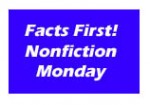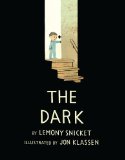Review of Frog Song, by Brenda Z. Guiberson and Gennady Spirin
by Brenda Z. Guiberson
illustrated by Gennady Spirin
Henry Holt and Company, New York, 2013. 32 pages.
Frog Song is a beautifully illustrated celebration of frogs all over the world. Each two-page spread has a painting that features one particular species of frog. The text gives an onomatopoetic sound like the frog makes (Psst-Psst, Click-Clack, TinkTinkTinkTink) and tells something distinctive about that frog, usually how it lays and cares for its eggs.
Here’s an example:
In northeastern Australia, the Scarlet-sided pobblebonk sings by a pond after heavy rain. Bonk . . . Bonk . . . Bonk. The female frog lays her eggs on the water and whips the gooey mass into a ball of bubbles. Fwish! This floating raft protects the eggs until the tadpoles hatch.
There are notes at the end with facts about the featured frogs, as well as a bibliography, online links, and a message about frogs being endangered.
But what makes this book really stand out are the gorgeous paintings. They go so beautifully with the poetic language. Yes, you get facts in this book, but they are presented in a way that fills the reader with wonder.
brendazguiberson.com
gennadyspirin.com
mackids.com
 I’m posting this review today in honor of Nonfiction Monday, hosted today by Perogies & Gyoza.
I’m posting this review today in honor of Nonfiction Monday, hosted today by Perogies & Gyoza.
Find this review on Sonderbooks at: www.sonderbooks.com/Childrens_Nonfiction/frog_song.html
Disclosure: I am an Amazon Affiliate, and will earn a small percentage if you order a book on Amazon after clicking through from my site.
Source: This review is based on a library book from Fairfax County Public Library.
Disclaimer: I am a professional librarian, but I maintain my website and blogs on my own time. The views expressed are solely my own, and in no way represent the official views of my employer or of any committee or group of which I am part.











